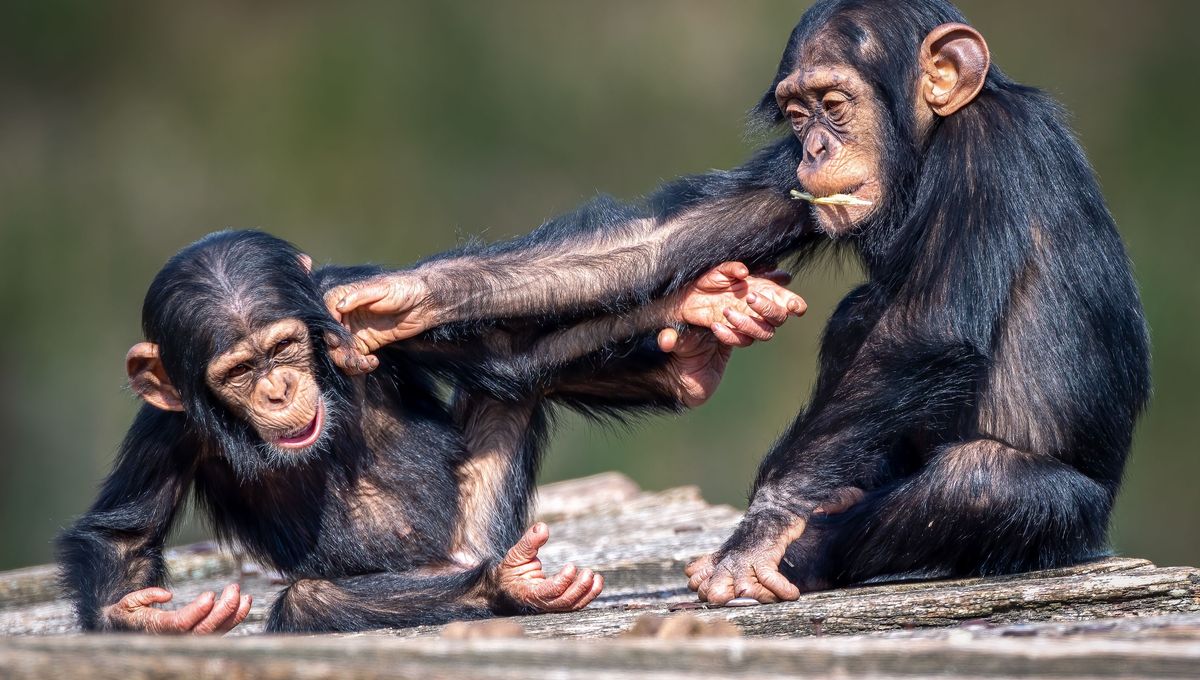
Human wounds heal around three times slower than those sustained by other primates, which may be a result of our specific evolutionary history that traded our fur for sweat glands.
The research that determined this was initiated by Akiko Matsumoto-Oda, a professor at the University of the Ryukyus in Japan, who observed Kenyan baboons as they tussled and fought. She noticed that, when these monkeys sustained wounds, even serious ones, they were able to recover far quicker than a person might.
To take this observation to the next step, Matsumoto-Oda and colleagues conducted experiments to compare the healing rates of humans with those of other mammals, including rats, mice, and four species of primate – chimpanzees (Pan troglodytes), olive baboons (Papio anubis), vervet monkeys (Chlorocebus pygerythrus), and Sykes’ monkeys (Cercopithecus albogularis).
Of course, sustaining injuries is part of life, whether you’re a human, another ape, a fish, or a bird. But the ability to recover from injuries is an important factor in an organism’s overall chances of survival. The big issue, when it comes to wounds, is often secondary damage resulting from infections, especially bites, which can be fatal.
Wounds around the mouth can also be debilitating for animals, as they can decrease their food intake, while wounds that cause limping can hinder an animal’s ability to flee predators, chase prey, climb, or access food in other ways. Repairing wounds is also biologically expensive, requiring energy and key components like proteins and carbohydrates to regenerate tissue. These sources are not always abundant, leading to a trade-off between the need to heal against the need to grow and or reproduce. Healing quickly is, therefore, a crucial aspect of survival.
However, it has long been proposed that different species heal at different rates, with humans appearing to heal more slowly than others. For a long time, it has not been clear whether this slower healing rate was unique to our species or was shared with other primates.
This is where Matsumoto-Oda’s work is important. During her study, she and her colleagues compared the healing rates of humans of 24 human patients who had recently had skin tumors removed, and compared daily measurements of the wounds with those on the animals mentioned above. These animals were anesthetized and then surgically given 40-millimeter (1.6-inch) wounds, but the team also observed naturally occurring wounds among five captive chimpanzees.
The team observed that the human wounds healed at a rate of 0.25 millimeters (0.01 inches) a day, whereas their animal counterparts healed at a rate of around 0.61 millimeters (0.02 inches) per day, on average.
They also noted that there was no significant difference between the wound healing rates among the four non-human primate species, and no difference between that of primates, rats and mice.
The results suggest humans evolved slower healing at a point in our ancient ancestry.
“This finding indicates that the slow wound healing observed in humans is not a common characteristic among primate order and highlights the possibility of evolutionary adaptations in humans,” the team writes in their paper.
We may think this is a negative development for our survival, but the slower healing rates may be connected to changes in our skin during our evolution. When we shed our fur and developed sweat glands, our body hair density would have decreased, leaving us at a potentially higher risk of injury. As a consequence, we may have developed a thicker layer of skin to add protection, which takes longer to heal when opened. The researchers also suggest that our social evolution may have helped mitigate the dangers of slower healing.
“Additionally, even though controversial, it is possible that the development of social support for older and disabled individuals in the human lineage, as well as the use of medicinal plants, mitigated the evolutionary disadvantage of delayed wound healing,” the team explains.
There is archaeological evidence to support this idea. For instance, researchers have found a 1.8 million-year-old skull belonging to an elderly male Homo erectus that had no teeth. This suggests this individual may have been supported by their social group when it came to food preparation and nutrition. Similarly, palaeontologists have uncovered the remains of a Neanderthal male that lived into middle age despite having lost an arm and sustaining cranial injuries at an earlier stage in their life.
This research therefore opens up incredible questions into how our ancient ancestors may have adapted to their slower healing rates, but of course, more research is needed before any broader conclusions can be drawn.
“A more comprehensive understanding of the underlying causes of delayed wound healing in humans requires a comprehensive approach that integrates genetic, cellular, morphological, fossil human skeletal and extant non-human primate data,” the authors conclude.
The study is published in the Proceedings of the Royal Society B.
Source Link: Human Wounds Heal Nearly 3 Times Slower Than Other Animals': Could This Be Due To Our Evolution?